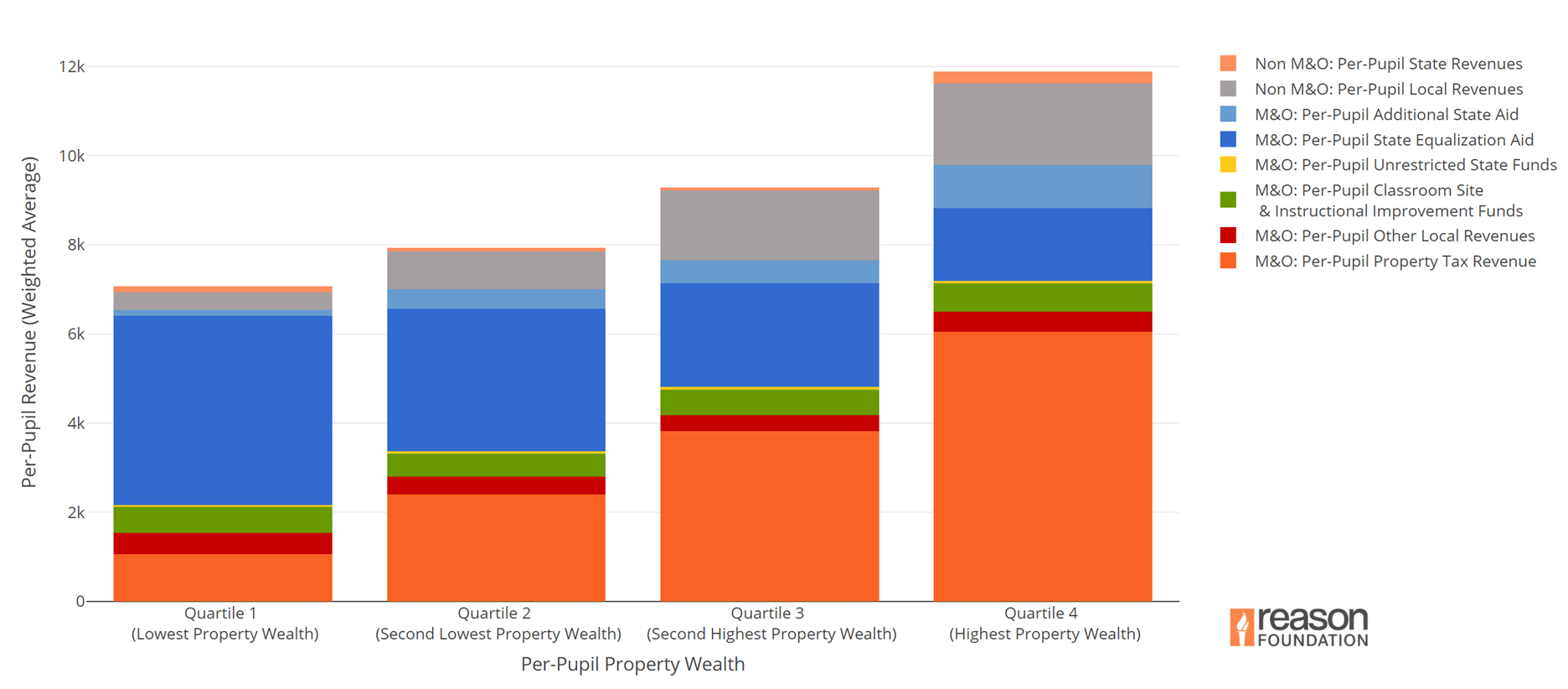Arizona spends nearly $12 billion a year on K-12 education each year, but the state’s system for allocating education dollars to school districts is deeply complex, unfair, and flawed.
Education funds often favor Arizona districts with more property wealth and less poverty. The dizzying array of grants for different school programs make it hard for policymakers, families, and other stakeholders to see how tax dollars are being used to serve students.
Having a full and accurate picture of how revenue is allocated to school districts, and what student characteristics make up these districts, can be difficult, if not impossible.
Reason Foundation’s education team has constructed the Arizona School Finance Dashboard to make it easier for policymakers and concerned stakeholders to get a better, more complete picture of the state’s K-12 funding system and how it serves students.
The dashboard provides data and comparisons that show how school funding disparities are often driven by property wealth.
Paradise Valley Unified School District and Washington Elementary School District, which are separated by less than 20 miles in the surrounding Phoenix area, are an example of one such trend.
Paradise Valley has 31,023 students and an 11.57 percent poverty rate. The school district received $10,321 in total per-pupil revenue last year. Per-pupil revenue is the combination of state and local funds that a school receives for each enrolled student and is the most common way to track education funding.
Washington Elementary had over double the poverty rate of Paradise Valley last year, with 25.81 percent of its 22,682 students considered below the poverty level. But Washington Elementary received only $8,443 in total per-pupil revenue, this is almost two thousand dollars less per student than Paradise Valley.
This data, and more examples like it, reveal how disconnected education funding is from students’ needs in Arizona.
There is a recurring theme whereby school districts with greater student needs, such as high poverty levels, large minority populations, and significant numbers of English language learners are often are not receiving an equitable share of resources. Of course, low property tax revenue due to low property wealth plays into these funding disparities, but not only does Arizona’s school finance system not account for property wealth differences, it actually provides significantly more state dollars to wealthy districts. This is due to the fact that funding outside of the state’s per-pupil revenue allowances appears to favor wealthier districts.
As you can see in Figure 1 below, the state’s per-pupil state equalization aid (dark blue) and per-pupil additional state aid (light blue)—revenue categories that exclusively use state dollars—exacerbate funding disparities between property-poor and property-rich school districts.
Figure 1
While this data does not expose or highlight every problem with Arizona’s school funding system, it should prompt policymakers to streamline the education system’s many grants and funding streams to ensure that education funding is more transparent and that state resources are flowing to the school districts with the greatest student needs.
Policymakers should examine every grant and component of the state’s funding formula and consider how dollars can be repurposed to prioritize the students who need them most.


